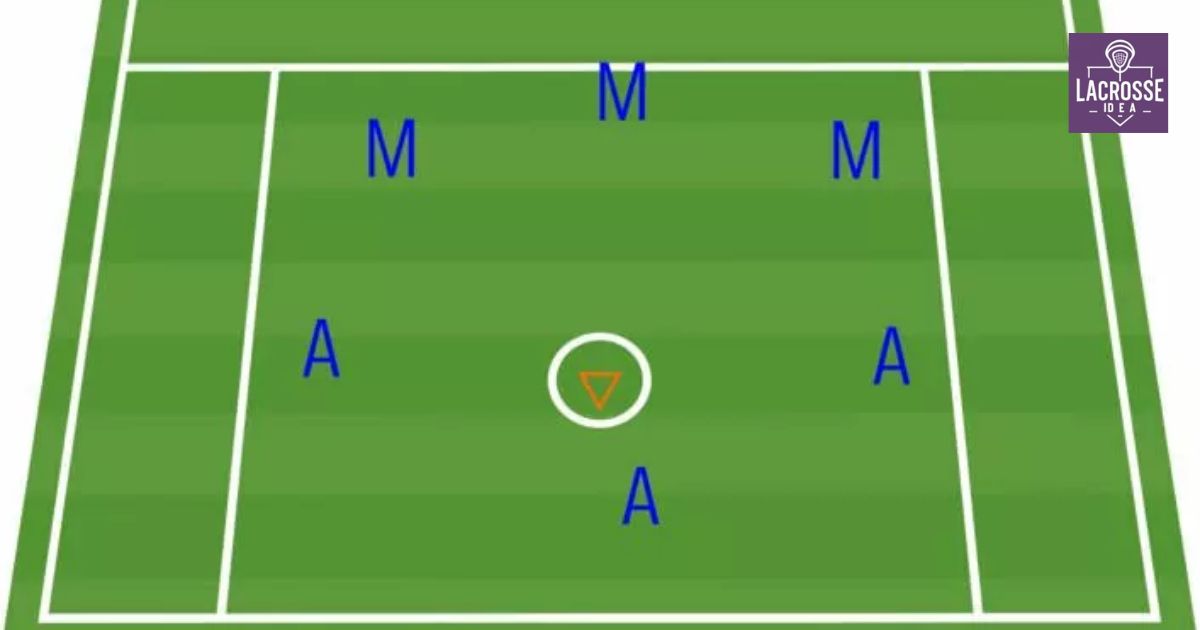In the exciting world of lacrosse, a vibrant dance of sticks and bodies unfolds on the field. As spectators eagerly gather, the question arises: just how many players will grace the stage? This article delves into the intricacies of lacrosse team composition and provides a comprehensive understanding of the number of players on the field. From the men’s lacrosse field to the women’s, discover the harmonious balance achieved through strategic substitutions and rotations. Join us as we uncover the secrets of this captivating sport.
Key Takeaways
- Lacrosse is played with different numbers of players on the field depending on the form of the game, with field lacrosse having 10 players, box lacrosse having 6 players, women’s lacrosse having 12 players, and indoor lacrosse having 5 players.
- Lacrosse teams consist of ten players on the field at a time, divided into three positions: attack, midfield, and defense, with one goalie.
- Substitutes and strategic rotations are allowed in lacrosse to maintain a competitive advantage and optimize player skills.
- Stick check and body check are legal actions in lacrosse, but players must avoid excessive force or contact. Fouls such as slashing, tripping, holding, interference, and offside have specific penalties and consequences.
The Basics Of Lacrosse
In the sport of lacrosse, the basics encompass the fundamental rules, skills, and techniques required for players on the field. Lacrosse is a fast-paced and highly physical game played with a small rubber ball and long-handled sticks. The objective is to score goals by shooting the ball into the opponent’s net, while also defending one’s own net.
To excel in lacrosse, players must develop proficiency in various skills such as passing, catching, cradling, and shooting. They must also possess good footwork, agility, and hand-eye coordination. Understanding the rules of the game, including penalties and positions, is crucial for players to effectively contribute to their team’s success. Mastering the basics of lacrosse is essential for players to build a strong foundation and progress in the sport.
Lacrosse Field And Game Length
Continuing from the previous subtopic, the lacrosse field dimensions and game length are important factors to consider in understanding the sport. The lacrosse field is rectangular in shape, measuring 110 yards long and 60 yards wide. It is divided into two halves by the midfield line. Each team has a defensive half and an offensive half. The length of a lacrosse game varies depending on the level of play.
In professional lacrosse, the game consists of four quarters, each lasting 15 minutes. In college lacrosse, the game is also played in four quarters, but the length of each quarter is 20 minutes. At the high school level, the game is typically played in four quarters of 12 minutes each. The game length and field dimensions are standardized to ensure fairness and consistency in gameplay.
Number Of Players In Lacrosse
The participation in lacrosse involves a specific number of players on the field. Lacrosse is a team sport that requires coordination and collaboration among players. The number of players on the field varies depending on the level of play and the type of lacrosse being played. Below is a table that outlines the number of players in different forms of lacrosse:
| Type of Lacrosse | Number of Players |
|---|---|
| Field Lacrosse | 10 |
| Box Lacrosse | 6 |
| Women’s Lacrosse | 12 |
| Indoor Lacrosse | 5 |
Each form of lacrosse has its own unique rules and regulations, but all of them share the common goal of teamwork and competition. Whether it’s the fast-paced action of box lacrosse or the strategic gameplay of field lacrosse, being part of a lacrosse team offers a sense of belonging and camaraderie.
Lacrosse Team Composition
What is the composition of a lacrosse team? Lacrosse teams typically consist of ten players on the field at a time, divided into three different positions: attack, midfield, and defense. The attack position is responsible for scoring goals and consists of three players. The midfield position is versatile, with three players who play both offense and defense.
Lastly, the defense position is responsible for preventing the opposing team from scoring and consists of three players. Additionally, there is one goalie who stands in the goal and defends against the opposing team’s shots. The composition of a lacrosse team is carefully balanced to ensure effective gameplay and teamwork. Each position plays a crucial role in the team’s success, fostering a sense of belonging and camaraderie among teammates.
Substitutes And Rotations
In regards to the composition of a lacrosse team, it is important to address the topic of substitutes and rotations. Lacrosse, like many team sports, allows for player substitutions and strategic rotations to keep the game flowing and maintain a competitive advantage.
Substitutes are players who are not on the field but are ready to enter the game when needed. Rotations, on the other hand, involve the movement of players from one position to another to optimize their skills and adapt to different game situations. The following table provides a visual representation of how substitutions and rotations can occur during a lacrosse game:
| Position | Starters | Substitutes |
|---|---|---|
| Attack | 3 | 2 |
| Midfield | 3 | 4 |
| Defense | 3 | 2 |
| Goalie | 1 | 1 |
Understanding the role of substitutes and rotations in lacrosse is essential to maximizing team performance and maintaining a competitive edge. Now let’s delve into the next section, which focuses on offense and defense in lacrosse.
Offense And Defense In Lacrosse
There are specific roles and positions for a certain number of players on the field in lacrosse. Whether you’re on offense or defense, each player has a crucial role to play in the game. Here are some key positions and responsibilities for both sides:
- Attackers: Responsible for scoring goals and setting up plays.
- Midfielders: Cover the entire field, transitioning between offense and defense.
- Crease Attack: Positioned near the goal to disrupt the defense and score close-range goals.
- Feeder: Focuses on passing and assisting teammates to create scoring opportunities.
- Dodger: Skilled at maneuvering through defenders to create scoring chances.
Transitioning into the subsequent section about ‘scoring in lacrosse’, understanding the different roles and responsibilities of players on offense and defense is essential to grasp how scoring opportunities are created and executed on the lacrosse field.
Scoring In Lacrosse
To understand how scoring opportunities are created and executed in lacrosse, it is crucial to delve into the dynamics of offensive play and the roles of each player on the field. In lacrosse, scoring primarily occurs when the offensive team successfully shoots the ball into the opponent’s goal. The offensive players work together to create scoring opportunities by passing and moving strategically to confuse the defense and find openings.
The attackmen are responsible for initiating and finishing plays, while the midfielders support both the attackmen and the defense. The scoring opportunities are maximized when the offensive players communicate effectively, make accurate passes, and take well-timed shots. Additionally, the goalie plays a critical role in preventing scoring by making saves. Understanding the dynamics of scoring in lacrosse sets the stage for discussing the out of bounds rules in the next section.
Out Of Bounds Rules In Lacrosse
Continuing the exploration of lacrosse dynamics, the focus now shifts to the out of bounds rules in the game. Understanding the rules regarding out of bounds situations is crucial for players and spectators alike. Here are five key points to keep in mind:
- When the ball or a player with the ball goes out of bounds, possession is awarded to the opposing team.
- If a player steps out of bounds while in possession of the ball, they must re-enter the field at the point where they went out.
- If the ball goes out of bounds after a shot, possession is awarded to the team whose player is closest to the ball when it crosses the boundary line.
- If the ball goes out of bounds after a shot and neither team is closest to the ball, possession is awarded to the team that did not take the shot.
- If a player intentionally throws the ball out of bounds to gain an advantage, a turnover is awarded to the opposing team.
Stick Check And Body Check Rules
In lacrosse, the rules regarding stick check and body check are essential for players to understand and follow. Stick check refers to the act of using one’s stick to legally dislodge the ball from an opponent’s stick. Players must aim to make a controlled and clean check, avoiding any excessive force or contact. Body check, on the other hand, involves using one’s body to legally impede an opponent’s progress or gain possession of the ball.
However, it is crucial to note that body checks must be made within the designated strike zone and not involve any unnecessary roughness. These rules are in place to promote fair play, safety, and sportsmanship. By adhering to these regulations, players can effectively contribute to the game while maintaining a sense of belonging within the lacrosse community.
Fouls In Lacrosse
After understanding the rules regarding stick check and body check, it is important to be aware of the various fouls that can occur in lacrosse. These fouls can result in penalties for the offending player or team. Here are five common fouls in lacrosse:
- Slashing: Using the stick to hit an opponent’s body or stick with excessive force.
- Tripping: Intentionally obstructing an opponent’s progress by using the stick or body to trip them.
- Holding: Using hands, body, or stick to impede or hinder an opponent’s movement.
- Interference: Making contact with an opponent who is not in possession of the ball, impeding their ability to play.
- Offside: Having more than the allowed number of players on one side of the field.
Men’s Lacrosse Field
The men’s lacrosse field consists of a rectangular playing surface. It measures 110 yards in length and 60 yards in width. The field is divided into three main areas: the attack area, the midfield area, and the defensive area. Each area plays a crucial role in the game, with players strategically positioned to maximize their team’s offensive and defensive capabilities.
Here is a breakdown of the men’s lacrosse field:
| Area | Dimensions |
|---|---|
| Attack Area | 40 yards by 60 yards |
| Midfield Area | 50 yards by 60 yards |
| Defensive Area | 20 yards by 60 yards |
The dimensions of the men’s lacrosse field allow for fast-paced and dynamic gameplay, with players constantly moving and strategizing to outwit their opponents.
Now let’s take a closer look at the women’s lacrosse field and how it differs from the men’s field.
Women’s Lacrosse Field
A women’s lacrosse field, unlike its male counterpart, features a distinct set of dimensions and markings. The field is slightly smaller, measuring 110 yards long and 60 yards wide. It is divided into three sections: the offensive end, the midfield, and the defensive end. Here are five key features of a women’s lacrosse field:
- 8-meter arc: This semi-circular arc is located in front of the goal and is used for penalties and free shots.
- 12-meter fan: It is a fan-shaped area in front of the goal, where defenders must be positioned during a free shot.
- Restraining line: This line separates the offensive and defensive ends and determines where players can move during the draw.
- Center circle: Situated at midfield, this circle is where the draw occurs to start the game and after each goal.
- Substitution area: Teams can make substitutions from the designated area on the sideline.
Understanding the dimensions and markings of a women’s lacrosse field is essential for players and fans alike to fully appreciate the game.
Frequently Asked Questions
What Are the Equipment Requirements for Lacrosse Players?
Lacrosse players are required to wear specific equipment for their safety and performance. This includes a helmet, shoulder pads, arm pads, gloves, a mouthguard, and cleats. Additional optional equipment may include rib pads and a protective cup.
Can Lacrosse Players Wear Protective Gear?
Lacrosse players can wear protective gear to ensure their safety on the field. This includes helmets, shoulder pads, elbow pads, and gloves. These precautions are essential in a sport known for its physicality and fast-paced nature.
Are There Any Age Restrictions for Playing Lacrosse?
Age restrictions for playing lacrosse vary depending on the league or organization. Some leagues have age divisions, while others may allow players of all ages. It is important to check with the specific league or organization for their age requirements.
Is Lacrosse a Contact Sport?
Lacrosse is a dynamic sport that demands physicality and skill. As a contact sport, players must navigate intense physical challenges while displaying finesse. Understanding the number of players on the field is crucial to effectively strategize and execute plays.
Are There Different Positions in Lacrosse and What Are Their Roles?
There are various positions in lacrosse, each with specific roles. These positions include attackers, midfielders, defenders, and goalkeepers. Attackers focus on scoring, midfielders transition between offense and defense, defenders aim to stop opponents, and goalkeepers protect the goal.
Conclusion
In conclusion, lacrosse is a dynamic sport that requires teamwork, skill, and strategy. The number of players on the field varies between different versions of the game, with men’s lacrosse typically having 10 players and women’s lacrosse having 12 players. Lacrosse players must adhere to specific rules and regulations regarding stick and body checks, as well as fouls.
Overall, lacrosse is a game that demands both physicality and finesse, making it an exciting and challenging sport to participate in. It is a battleground where players must navigate through the field like warriors on a quest for victory.








